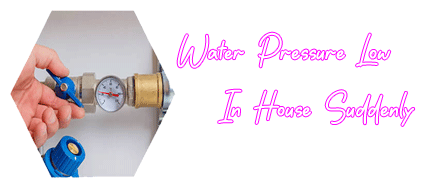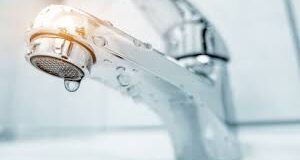Whether it’s showering, washing dishes, or running appliances, low water pressure can be a frustrating issue. When water pressure suddenly drops in your house, it’s essential to address the problem quickly to avoid further complications. Here’s a detailed guide to understanding and resolving the issue of water pressure low in house suddenly.

1. Check for Leaks in Pipes and Valves
One of the primary reasons for low water pressure is leaks in your plumbing system.
What to Do:
Ensure that all valves, including the main water valve and those under sinks, are fully open.
If you suspect hidden leaks in walls or underground, contact a professional plumber to locate and repair them.
2. Pressure Regulator Malfunction
A pressure regulator is a device installed in many homes to control the water pressure entering the house.
Solution:
Test the pressure using a pressure gauge. Normal pressure should be between 40 and 60 psi.
3. Clogged Pipes or Aerators
Mineral buildup in pipes or clogged faucet aerators can restrict water flow, leading to low pressure in specific fixtures or throughout the house.
Steps to Fix:
For Aerators: Remove the aerator from the affected faucet and soak it in vinegar to dissolve mineral deposits. Rinse and reattach it.
For Pipes: Older homes with galvanized iron pipes are prone to internal corrosion. Consider replacing these pipes with modern materials like copper or PEX for a long-term solution.
4. Municipal Water Supply Issues
A sudden drop in pressure could be due to maintenance work or a burst pipe in your area.
What to Do:
Contact your water utility provider to inquire about maintenance or water supply problems.
5. Partially Closed Valves
If a valve controlling the water supply is accidentally turned partially off, it can reduce water pressure in the entire house.

Solution:
Inspect all valves, including the main shutoff valve and those connected to individual fixtures, to ensure they’re fully open.
6. Clogged or Faulty Water Heater
A water heater can also be the culprit behind low water pressure, especially if the problem is only with hot water.
Fixing the Water Heater Issue:
7. Use of Multiple Fixtures Simultaneously
Using multiple fixtures at the same time (e.g., running the washing machine while showering) can strain the water supply, leading to lower pressure.
Solution:
Avoid running multiple water-demanding appliances at once.
Consider installing a water pressure booster pump to maintain steady pressure during high usage.
When to Call a Professional
If you’ve tried these solutions and still face water pressure low in house suddenly, it’s time to call a professional plumber. They have the tools and expertise to diagnose and fix complex issues, such as hidden leaks, major clogs, or problems with the main water line.
Preventive Measures
Use a water pressure gauge to monitor pressure levels and detect issues early.
Replace old pipes and valves with modern materials to improve water flow.
Install faucet aerators and water-saving fixtures to prevent overloading your plumbing system.
By staying proactive and addressing issues promptly, you can maintain consistent water pressure and ensure the smooth functioning of your household plumbing. If you notice a sudden drop in water pressure, act quickly to identify and resolve the problem before it escalates.




